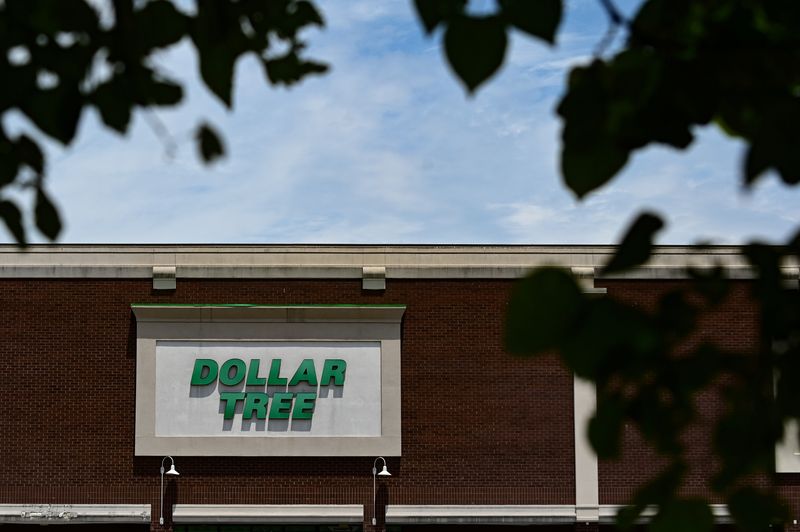By Savyata Mishra
(Reuters) -Dollar Tree forecast annual profit largely below estimates on Thursday owing to higher costs and a shift in spending towards lower-margin consumables, dragging its shares down more than 10%.
Consumers, especially from low- and middle-income groups, remain under pressure from still-high inflation and are moving away from discretionary goods, typically more profitable than perishables like snacks and cookies.
"Regarding the industrywide shift in consumer purchasing behaviors to consumables, we believe this is reflective of the current macroeconomic environment," CEO Richard Dreiling said on a conference call.
Last week, retail bellwether Walmart (NYSE:WMT) raised its full-year forecasts, citing strong demand for its low-priced groceries and health and wellness products.
Gross margins for Chesapeake, Virginia-based Dollar Tree (NASDAQ:DLTR) declined by 290 basis points in the quarter over the previous year.
"The headwinds we're having in shrink are muting our margins," CFO Jeffrey Davis said.
Dollar Tree, like retailers Target and Macy's (NYSE:M), has seen its margins weighed by a rise in retail shrink, where inventory is lost, damaged, or stolen.
The dollar store chain's profit outlook was also impacted by unfavorable shrink trends, rising utilities costs from "unseasonably high temperatures" and labor costs, Davis said.
Analysts said the company's results were mixed. Oppenheimer & Co analyst Rupesh Parikh said the lowered profit forecast "represented a disappointment versus expectations in our conversations, which did not contemplate the high-end being narrowed".

Latest results and forecasts from retailers ranging from Macy's to Foot Locker (NYSE:FL) also offered fresh signs that U.S. consumer spending is under stress heading into the second half of the year.
Dollar Tree now expects to earn in the range of $5.78 to $6.08 per share in fiscal 2023, softer than analysts' expectation of $6.03, according to Refinitiv IBES data.